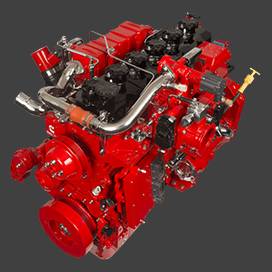Pro . 12, 2024 22:33 Back to list
brake drum design
Brake Drum Design An Overview
Brake drums play a crucial role in the safety and performance of vehicular braking systems. As a key component of traditional hydraulic brakes, brake drums convert mechanical energy into heat energy through friction, allowing vehicles to decelerate or come to a complete stop. Understanding brake drum design is essential for engineers, automotive designers, and mechanics, as it affects the overall efficiency, longevity, and reliability of the braking system. This article delves into the fundamental aspects of brake drum design, including materials, structural considerations, and development trends.
Materials Used in Brake Drum Design
The choice of materials for brake drums is pivotal due to the extreme conditions they face during operation. Common materials include
1. Cast Iron Traditionally, cast iron has been the material of choice for brake drums due to its excellent wear resistance and thermal stability. It can handle high temperatures generated during braking without significant deformation.
2. Aluminum Alloys In recent years, aluminum alloys have gained popularity for their lightweight properties, which contribute to overall vehicle efficiency. Though not as thermally stable as cast iron, advancements in alloy formulations have improved their performance under heat stress.
3. Carbon-Composite Materials Emerging technologies have introduced carbon-composite materials, which offer superior strength-to-weight ratios and thermal management capabilities. This innovation is particularly relevant for high-performance and racing applications where maximum efficiency and weight savings are critical.
Structural Design Considerations
Several structural factors must be taken into account when designing a brake drum
1. Diameter and Width The size of the brake drum significantly affects braking performance. Larger diameters can provide better leverage for braking forces, while width impacts the surface area for friction. Designers must strike a balance to meet vehicle specifications.
2. Heat Dissipation Effective heat dissipation is vital. Brake drums generate considerable heat, which can lead to brake fade if not managed properly. Engineers design brake drums with ventilation features or finned structures to enhance airflow and cooling.
brake drum design

3. Friction Surface The design of the friction surface is critical for effective braking. The surface finish must be optimized for maximum grip while minimizing wear on both the drum and the brake shoes. This often requires a complex interplay of material choice, surface texture, and geometry.
4. Reinforcement and Stiffness To withstand the forces during braking, the drum must be structurally sound. Designers often incorporate various reinforcements and stiffness improvements, such as ribs or specific geometric shapes, to enhance the drum's durability without adding unnecessary weight.
Manufacturing Techniques
Innovations in manufacturing techniques also play a vital role in brake drum design. Precision engineering is critical to ensure that the drums meet exact specifications for roundness, thickness, and surface finish. Several methods are employed
1. Casting Traditional methods include sand casting or shell-molding, which allow for complex shapes but may not achieve the tight tolerances required for high-performance applications.
2. Machining Post-casting machining processes are often necessary to achieve the required precision on the friction surface and overall dimensions.
3. Advanced Techniques Additive manufacturing, or 3D printing, is being explored for producing brake drums with intricate designs that optimize weight and strength while maintaining performance.
Trends and Future Directions
As the automotive industry moves towards electrification and automation, brake drum design is also evolving. There is an increasing emphasis on reducing weight for improved energy efficiency and exploring regenerative braking systems in electric vehicles, which may reduce the reliance on traditional brake drums. Moreover, developments in smart materials and sensors for monitoring brake performance in real-time could pave the way for enhanced safety and maintenance routines.
Conclusion
In conclusion, brake drum design is a complex interplay of materials, structural considerations, and advanced manufacturing techniques. With the automotive industry constantly evolving, brake drum designs must adapt to meet new demands for efficiency and safety. By understanding these principles, engineers can create brake drums that provide reliable performance in various conditions, ultimately contributing to the safety of vehicles and their occupants. As technology continues to advance, we can expect even more innovations in brake drum design and functionality in the years to come.
-
FUWA: Premium Quality, Reliable Performance & Innovative Solutions
NewsAug.25,2025
-
Liza Brake Drum: Superior Quality & Performance for Safe Driving
NewsAug.24,2025
-
Iveco Brake Drum | Premium OE Quality for Daily & Eurocargo
NewsAug.22,2025
-
Your Brake Drum Man: Quality & Performance Parts
NewsAug.21,2025
-
Explore Japan: Ultimate Travel Guide & Authentic Experiences
NewsAug.19,2025
-
Your Brake Drum Man: Premium & Reliable Brake Drums for Sale
NewsAug.18,2025
